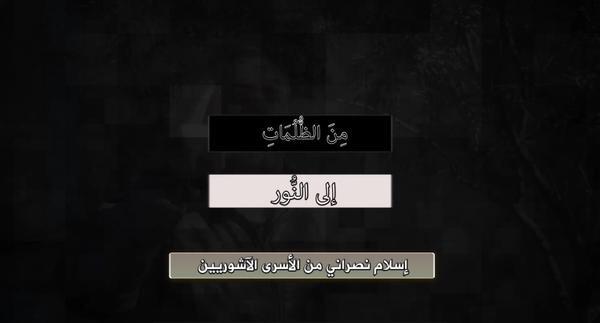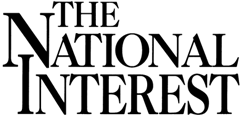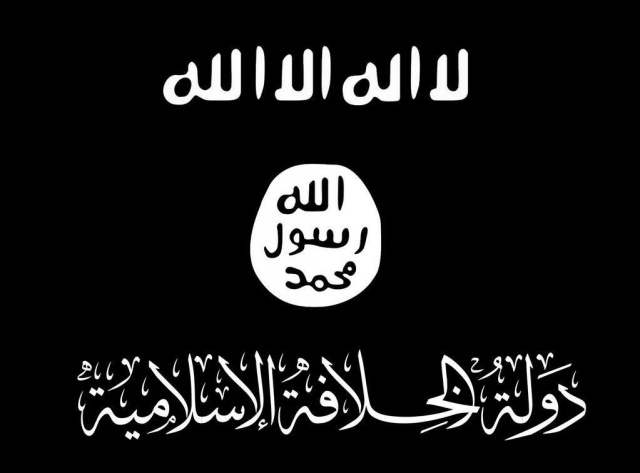
______________
To inquire about a translation for this video message for a fee email: [email protected]
Month: March 2015
al-Ḥayāt Media Center presents a new video message from The Islamic State: "Message to Our People in Kurdistān"

_____________
To inquire about a translation for this video message for a fee email: [email protected]
Check out my new article co-authored with Oula Abdulhamid Alrifai for The National Interest: "Assad Plays America the Fool… Again"

Last decade, Bashar al-Assad’s regime fooled Washington into believing that he would bring about reform. He did not. The lack of institutional and economic reforms led to the uprising and civil war in Syria.
It is a shame then that Assad is fooling Washington a second time, now arguing he is the lesser of two evils compared to ISIS, an argument that has influenced Secretary of State John Kerry, who is now calling for negotiations. Assad’s regime is just as bad as ISIS. If Washington falls for Assad’s manipulation and deceptions again, what will be the result?
The stakes are greater now than in the last decade and the security situation more tenuous, so why would anyone put trust in a regime that has not only failed its own people, but also blatantly conned Western leaders not once, but twice?
Assad’s “reforms” were nothing more than a thin cover for further corruption. There was never a real intention to improve economic or living conditions. Not only was the international community fooled, but many Syrians bought into the lies. It did not take long for the “ophthalmologist” to be proven short-sighted as protesters took to the streets in Damascus in February 2011 chanting “Syrian people will not be humiliated!” Forty percent of Syria’s population was living under the poverty line and more than twenty-five percent of young men were unemployed. Consequently, many Syrians were immigrating to neighboring countries looking for work and a better life.
According to United Nations Development Programme (UNDP), between 2003-2004, two million Syrians could not obtain basic needs. Fifty-six percent of Syria’s rural population depend on agriculture for survival, and in 2004,more than seventy-seven percent of them were landless. Today, the situation is substantially worse despite Assad’s June 2014 referendum campaign dubbed“Sawa” to “improve” Syria’s economy. In fact, the overall poverty rate has nowreached eighty percent.
Shopping malls and high-rise hotels were purposely built in Damascus to fool tourists, journalists, celebrities, and goodwill ambassadors. Even elites and upper-class families found shopping at these malls too expensive. The middle-class was crushed during Assad’s “reform era” and the gap between rich and poor was growing ever wider. In contrast, the families of the regime and its allies were making billions. The era of pseudo-reforms led to a mass exodus of the population to the cities, which only became more acute during a droughtlast decade.
With the rise of ISIS and its open brutality, the United States has stoppedcalling for the overthrow of Assad and is actually now working together with Assad to “defeat” ISIS. This is the height of delusion. From the beginning of the uprising, the regime portrayed non-violent protesters as terrorists even though they were not. Assad needed to create the atmosphere, which would lead to the rise of more radicals in order to serve his narrative and “prove” that the choice boiled down to either him or the “terrorists.” Assad has been the godfather of ISIS and other jihadis. The regime guessed correctly that Washington would fall for this.
The regime is one of the key reasons why radicals were able to flourish post-uprising. It is true that elements within the mainstream rebellion did not push back against the rise of radicals, in part due to short-sighted leadership and Islamist co-optation, but Assad was the one that put many of the radicals back out onto the battlefield after he released numerous radicalized individuals from Sednaya prison in mid-2011.
Ninety percent of those in the prison had been accused of previously fighting in Iraq and key Jabhat al-Nusra, Ahrar al-Sham, and Jaysh al-Islam leaders were part of this “amnesty.” Their subsequent actions were the logical conclusion of a radicalization process that occurred over the previous decade due to the regime’s treatment of prisoners. Besides heavily-documentedphysical torture, the regime mentally and emotionally abused prisoners through burning, urinating, and stepping on the Qur’an. Additionally, the prison was located in a Christian town known for large-scale religious ceremonies and partying. These carefully orchestrated actions created the setting for the incubation of radicalization.
This type of manipulation is nothing new, and the regime helped facilitate and train members of al-Qaeda in Iraq last decade as well as enabled Fatah al-Islam in Lebanon. Once these radicals were freed in 2011, Assad’s military focused on mainly fighting the mainstream rebels while only occasionally targeting the radicals. This is because the regime knew that jihadis would also move against the rebels, indirectly helping the regime. Both were mutually benefiting from one another even if there was no coordination. Because of this, the Assad regime can now claim that he is fighting terrorists as the pool of moderates has shrunk due to the regime and jihadi onslaught.
This policy got more out of control than the regime would have predicted: the consolidation of three provinces (Jabhat al-Nusra in Idlib and ISIS in al-Raqqa and Deir al-Zour) under jihadi control. Even with the assistance of the Iranian Revolutionary Guards, Hezbollah, and others, Assad cannot roll back these groups due to a lack of capacity, illustrating the inability of the regime to have true sovereignty over Syria. And this is without even mentioning that mainstream rebels also control parts of the north and south, Israel’s airstrikes against Hezbollah, coalition airstrikes against Jabhat al-Nusra and ISIS, and Turkey sending tanks into Syria to protect the tomb of Süleyman Şah.
Closer to the regime, the power of the jihadis has grown, demonstrating it is not just a periphery issue. ISIS gained the allegiance of the Rijal al-Haq rebels in Wadi Barada area in Rif Dimashq (Damascus countryside). It has also taken control of Hajr al-Aswad, fifteen minutes from the center of Damascus–about the distance from Silver Spring to downtown Washington, D.C. Additionally, Jabhat al-Nusra conducted a suicide bombing of a bus of alleged Shia pilgrims outside the Citadel of Damascus. Another group, Jaysh al-Islam shelled the core of Damascus. If the regime cannot keep the peace where it is based, how can one expect it to do so in the rest of the country?
Even with help of outside forces, Assad has still been losing territory. His regime is more reliant than ever on Iran and Hezbollah. The Revolutionary Consultative Council released a statement saying that Iran is occupying Syria. This shows that Iran is able to gain hegemony over yet another Arab state and put itself in a better position to challenge its rivals in the Gulf. Iran is already consolidating its grip over Iraq, building up proxies in Bahrain, and obtaining closer relations with the Huthis in Yemen. Iran is de-facto surrounding its nemesis Saudi Arabia, which would potentially lead to more brazen policies on its part that would go against American interests and embolden more radicals.
Iran and its Shia-proxy networks in Syria have caused not only the radicalization of the local population, but is the original reason why so many Sunni foreign fighters began to come to Syria. This pushed many moderates into
New article from al-Muhājirūn in East Africa: "The Tormentors: A Biography of An East African 'Amniyat'"

Click the following link for a safe PDF copy: al-Muhājirūn in East Africa — “The Tormentors- A Biography of An East African ‘Amniyat'”
_______________
Majmu'ah Nukhbat al-Fikr presents a new release from al-Qā’idah's Abū Yaḥyā al-Lībī: "Message to the Conquerer Abū Muḥammad al-Jawlānī"

Click the following link for a safe PDF copy: Abū Yaḥyā al-Lībī — “Message to the Conquerer Abū Muḥammad al-Jawlānī”
______________
To inquire about a translation for this release for a fee email: [email protected]
Masāma’ al-Khayr l-l-Inshād presents a new Nashīd from Abū Mālik al-Maqdisī: "Our Heroes: The Drafters of the Dawn With Blood"

Abū Mālik al-Maqdisī — “Our Heroes- The Drafters of the Dawn With Blood”
______________
To inquire about a translation for this nashīd for a fee email: [email protected]
New video message from The Islamic State: "Establishing the Ḥad of Theft – Wilāyat Diglah"

________________
To inquire about a translation for this video message for a fee email: [email protected]
Ajnād Foundation For Media Production presents a new release from The Islamic State: “Recitation of Sūrat al-Munāfiqūn"

The Islamic State- “Recitation of Sūrat al-Munāfiqūn”
______________
To inquire about a translation for this recitation for a fee email: [email protected]
New video message from The Islamic State: "Message From the Soldiers of Islām to Those On the Front Lines of the Fortified Strongholds of the Media – Wilāyat Nīnawā"

________________
To inquire about a translation for this video message for a fee email: [email protected]
Hizballah Cavalcade: The Big Picture Behind Kata’ib Hizballah’s Surface-to-Air Missile (SAM) Threats
NOTE: For prior parts in the Hizballah Cavalcade series you can view an archive of it all here.
—
The Big Picture Behind Kata’ib Hizballah’s Surface-to-Air Missile (SAM) Threats
By Phillip Smyth
First appearing on March 15, 2014 and posted to social media accounts linked to Kata’ib Hizballah (these included simultaneous posts on Facebook and Youtube)1, a video showing what appeared to be SA-7-type and SA-18-type Man-Portable Air-Defense System (MANPADS) was shown in the hands of Kata’ib Hizballah militiamen.
Interestingly, sections of one of the MANPADS serial numbers were also exposed in the video clip. It is possible the missile systems were not SA-7 and SA-18s, but might actually be an Iranian produced Misagh-type or Chinese produced QW-1-type MANPAD.2 This would not be the first time Kata’ib Hizballah has shown off a MANPAD capability. In 2010, the group released a video showing it possibly launching a QW-1-type missile system.
Technical details on what type of missile system was deployed aside, the video serves as a cap on a developing narrative line which has been promoted by Iran’s Shia militia proxies and via some Tehran’s own media organs.
Claims emanating from Iranian and their other proxy Shia militias have stated that the U.S. and other Coalition allies have supplied the so-called “Islamic State” (ISIS) via aerial deliveries. This was particularly the case in the month of February, during the run-up to the predominantly Shia militia push on Tikrit.3
As early as February 7, 2015, Kata’ib Hizballah statements were repeated in Iranian media. One report claimed the group had confirmed the U.S. was supplying ISIS via helicopter.4 Other accusations by Kata’ib Hizballah of U.S. supplies being routed to ISIS were continued. On February 20, a flurry of stories hit the media. Al-Etejah TV published a report that alleged that U.S. helicopter landed near the home of Sheikh Qasim al-Janabi.5 Janabi, a moderate Sunni tribal leader who worked with the Iraqi government was kidnapped and assassinated in Baghdad on February 14th.6 Janabi’s son and other moderate Sunni parliamentarians blamed Shia militias for his kidnapping and murder.7 Also on the 20th, Al-Etejah published a story citing representatives in Babil who claimed U.S. aircraft were dropping supplies to ISIS.8 Other outlets also published that Kata’ib Hizballah had threatened to deploy anti-aircraft missile systems in the wake of these claims that the U.S. was supplying ISIS.9
Three days later, the Badr Organization-linked Al Ghadeer TV reported that forces of the Hashd al-Sha’abi (Popular Mobilization, a term used to describe the umbrella grouping of numerous Iranian-backed and other local Shia militia forces) claimed to have recorded landings in Babil Province.10 This also coincided with even more baseless claims distributed via the IRGC-linked Fars News that two British planes had been “shot down” while carrying weapons to ISIS.11
These types of accusations continued, and on March 5, 2015, the head of the Badr Organization’s parliamentary bloc, Qasim Muhammed Jalal Hussein Al-Araji,12 stated that the group had documents proving the U.S. was aiding ISIS.13 In an article published a day after the Kata’ib Hizballah video release, Harakat Hizballah al-Nujaba leader, Akram Ka’abi threatened U.S.-led Coalition aircraft. In the interview he stated, “Our air defenses are ready to target their planes, which are helping IS by giving them weapons and ammunition.”14
What Does It All Mean?
Needless to say, an active campaign by Kata’ib Hizballah and other Iranian-backed Iraqi Shia militia/jihadist organizations has been aimed at the U.S. and other Coalition allies (namely, the U.K.). The display of MANPAD systems underlines what likely appears to be messaging aimed at reducing the Coalition’s willingness to undertake further anti-ISIS air operations. In turn, if the threats succeed in that goal, it would grant more responsibility and control for Iran and its proxies on the battlefields of Iraq.
Another, more ideologically based goal is also included within these threats. The claim that the U.S. and other Western entities have supported radical Sunni extremist groups is a theme well honed by Iran and its proxies since the U.S. occupied Iraq (2003-2011) and in the war in Syria.15 The further push for these lines demonstrates another longer-term type of goal, even if it is only marginally effective, to alter the narrative and build broader distrust for the U.S. and other Western states.
1 Kata’ib Hizballah, an Iraq-based, direct Iranian proxy, was registered by the U.S. State Department as a Foreign Terrorist Organization in 2009: https://www.state.gov/r/pa/prs/ps/2009/july/125582.htm.
2 See: https://blogs-cdn.fas.org/wp-content/uploads/2013/10/The_MANPADS_Threat.pdf.
Note: Adam Rawnsley published a very comprehensive analysis of Kata’ib Hizballah’s MANPAD capabilities: https://medium.com/war-is-boring/iran-backed-terror-group-parades-new-anti-aircraft-missiles-in-iraq-ca0204079eb0 in the piece, Rawnsley assessed that one of the missile systems shown was a Chinese QW-1M.
3 See: https://www.cbsnews.com/news/isis-iraq-iran-shiite-militias-tikrit-questions-about-mosul/.
4 See: https://www.alalam.ir/news/1674215.
5 See: https://aletejahtv.org/index.php/permalink/47550.html.
6 See: https://www.wsj.com/articles/leading-iraqi-sunni-tribal-sheik-killed-1423951260.
7 Note: It is possible that Kata’ib Hizballah was attempting to craft another anti-U.S. conspiracy theory (or theories) with the inclusion Janabi in their reportage.
See: https://www.washingtonpost.com/world/sunni-parties-consider-leaving-iraqi-parliament-after-slaying-of-sheik/2015/02/14/7e164a8c-b463-11e4-bf39-5560f3918d4b_story.html.
8 See: https://aletejahtv.org/index.php/permalink/47558.html.
9 See: https://www.alsumaria.tv/news/125515/كتائب-حزب-الله-سننشر-صواريخ-مضادة-للطائر/ar.
10 See: https://alghadeer.tv/news/detail/23789/.
11 See: https://english.farsnews.com/newstext.aspx?nn=13931204001534.
12 See: https://www.iraqiparliament.info/en/node/673.
13 See: https://almasalah.com/ar/news/48777/%D8%A8%D8%AF%D8%B1–%D8%A7%D8%AF%D9%84%D8%A9-%D8%AA%D8%AB%D8%A8%D8%AA-%D9%85%D8%B3%D8%A7%D8%B9%D8%AF%D8%A9-%D8%A7%D9%85%D8%B1%D9%8A%D9%83%D8%A7-%D9%84%D8%AF%D8%A7%D8%B9%D8%B4.
14 See: https://www.al-monitor.com/pulse/originals/2015/03/iraq-shiite-hezbollah-nujaba-victory-islamic-state.html#.
15 In my monograph, “The Shiite Jihad In Syria and Its Regional Effects,” I outlined the ideological roots for claiming that Western states backed ISIS and other radical Sunni extremist elements. See: https://bit.ly/ShiiteJihadPDF. See the section marked, “Takfiris: A Perfect Enemy.”
